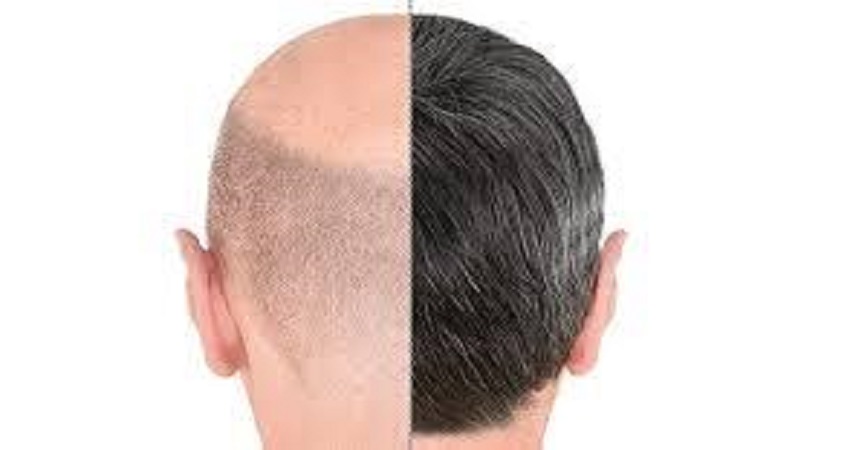Hair transplant in Dubai is an advanced medical solution that offers people the opportunity to regain a natural, full head of hair after years of suffering from hair loss. However, many patients are surprised to experience further shedding of the transplanted hair after the procedure, a phenomenon known as “shock loss.” In this article, we will guide you step-by-step to understand the causes, timing, and how to properly manage this shedding to ensure the best long-term results.
First: Understanding Hair Loss After Transplantation
It is normal to experience temporary hair loss for a period ranging from two weeks to a month after the procedure. This is a completely natural phase.
This shedding occurs because the transplanted hair follicles enter a temporary “resting” phase after experiencing the shock of the delicate surgery. After this phase, the follicles begin to grow again over the following months, producing stronger and more resilient hair.
Therefore, there is no need to worry if you notice some shedding of the transplanted hair; it is part of the healing process and not an indication of the procedure’s failure.
Second: When Does Hair Loss Start After Transplantation?
Hair loss after transplantation typically begins within the third or fourth week following the procedure and may continue for up to two months.
In contrast, new hair growth gradually begins three to four months after surgery.
It’s important to understand that the final result is only visible after nine to twelve months, when the new hair has fully grown and achieved its natural density.
Third: Causes of Hair Loss After Transplantation
While hair loss may seem alarming, it has clear and medically understandable causes, including:
Surgical trauma: Transplanted follicles need time to adapt to their new location after transplantation. This temporary trauma leads to hair loss before regrowth begins.
Change in the hair’s natural cycle: Transplanted hair enters a temporary resting phase (telogen phase) before resuming its activity.
Improper post-operative care: Some patients may not adhere to the doctor’s post-operative instructions, such as avoiding scratching or washing too early, which can stress the follicles.
Hormonal or psychological factors:
Stress, lack of sleep, or poor nutrition can weaken transplanted hair follicles and delay the growth phase.
Fourth: How to deal with hair loss after the procedure?
1. Be patient and don’t worry.
Remember that this is a normal phase. Most patients notice a significant improvement after the fourth month, so there’s no need to panic in the first few weeks.
2. Follow your doctor’s instructions precisely.
Each doctor provides a specific protocol for post-transplant scalp care. Adhere to the washing schedule, shampoo type, and hair drying method to avoid damaging the new follicles.
3. Focus on a healthy diet.
Be sure to eat foods rich in iron, zinc, and vitamins B and D, as these are essential for supporting new hair growth and strengthening the follicles.
4. Avoid smoking and alcohol.
These habits negatively affect blood flow to the scalp, which weakens the follicles’ ability to grow properly.
5. Using Hair Growth Support Treatments
Your doctor may recommend treatments such as minoxidil or platelet-rich plasma (PRP) to stimulate hair growth and accelerate results.
6. Avoiding Sun Exposure and Excessive Heat
After the procedure, avoid direct sunlight and using a hairdryer on high heat settings, as these can damage the scalp.
Fifth: Timeline for Results After Hair Transplantation
Stage | Time Period | What Happens During It
Weeks 1-2: Swelling begins to subside, and small scabs form in the transplanted area.
Weeks 3-4: Transplanted hair begins to fall out due to temporary shock.
Months 3-4: New hair begins to grow, soft and fine.
Months 6-9: Noticeable and significant increase in density.
Months 12-18: Final result is clearly visible with strong and healthy hair. Sixth: Signs That Require a Doctor’s Consultation
Although hair loss is normal in most cases, there are some signs that require immediate medical attention:
Severe hair loss continues after the third month.
The presence of inflammation or abnormal discharge on the scalp.
Excessive pain or itching that does not subside with prescribed treatments.
No new hair growth after six months.
In these cases, the doctor will examine the scalp and hair follicles to accurately determine the cause and prescribe the appropriate treatment.
Seventh: Tips for Maintaining Results After Transplantation
Use a gentle shampoo specifically formulated for sensitive scalps.
Gently massage your scalp to stimulate blood circulation.
Maintain a healthy lifestyle that includes exercise and sufficient sleep.
Avoid using chemical hair products or dyes during the first few months.
Be sure to attend all scheduled follow-up appointments with your doctor.
Eighth: The Psychological Aspect After the Procedure
It is important to be realistic about the results. Transplanted hair needs time and patience to achieve a natural appearance. During this period, some patients may experience anxiety or frustration, but psychological support and prior knowledge of the recovery process greatly help them overcome these challenges with confidence and comfort.
Ninth: Conclusion – The Right Approach is Key to Success
Hair loss after transplantation is not a failure of the procedure, but rather a part of the journey to regain natural hair. Proper care, regular medical follow-up, and patience are the secrets to achieving optimal results.
If you are looking for the best post-operative care and specialized medical expertise in cosmetic treatments, choosing a Dubai cosmetic clinic is a wise step towards a comprehensive treatment experience that combines precision, expertise, and long-lasting results.


 :
: